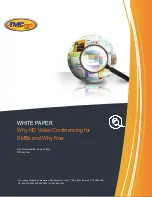
March 23, 2012 • Alcorn McBride ProTraXX User’s Manual • Rev 1.4 •
Page 35
Example 1
T:13:46 D:01/1/2015 E:COMMAND 1:"1C12PL"
This is the simplest possible example because it contains the minimum number of
fields needed to execute a scheduled event. Notice that the example occupies only
one line of text, and that each field is separated by a space. In order, this is exactly
what each field means.
Start Time(T):
1:46pm in the afternoon (
13:46
military)
Start Date(D):
January 1
st
2015
Event(E):
COMMAND – Specifies that parameter 1 contains a ProTraXX
command
Parameter 1(1):
The command string “1C12PL” will cause the ProTraXX to play
file #1 to channel #12.
Example 2
T:14:46 D:01/1/2015 E:COMMAND 1:"C12RJ" ;Stop CH 12
Playback
Two things have changed in this example.
Start Time(T):
2:46pm in the afternoon (
14:46
military)
Start Date(D):
January 1
st
2015
. (same as Example 1)
Event(E):
COMMAND (same as Example 1)
Parameter 1(1):
The command string “C12RJ” will cause the ProTraXX to stop
playback on channel pair 2.
Using Example #1 and Example #2 together in a schedule file will cause file #1 to
begin playback at 1:46PM on January 1
st
, 2015 and stop playback at 2:46PM the
same day.
One other thing that is special about this event is that the comment “
Stop
Playback
” has been added at the end of the line using a semicolon(;).
Anything
found after a semicolon is ignored by the scheduler.
You can even place a
comment on its own line, if you like.
















































